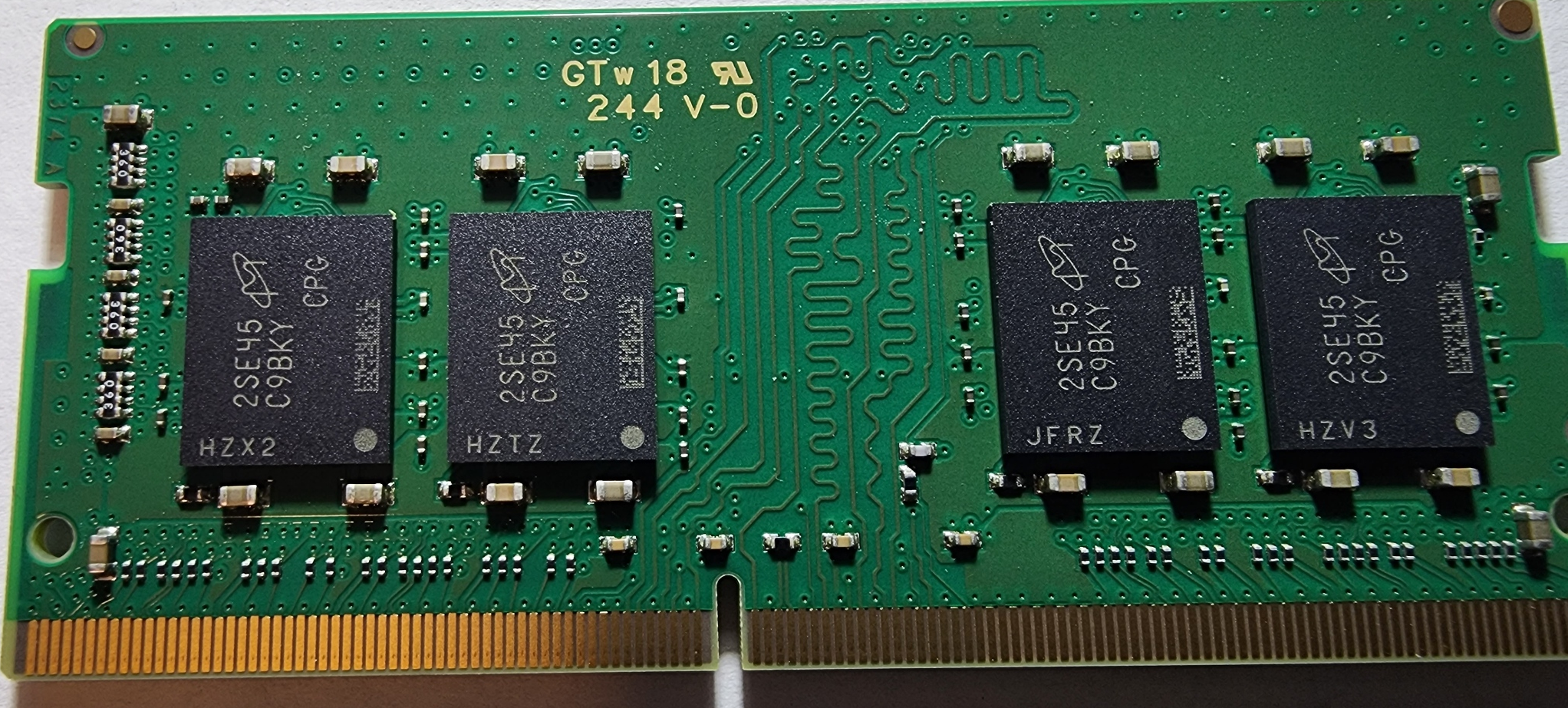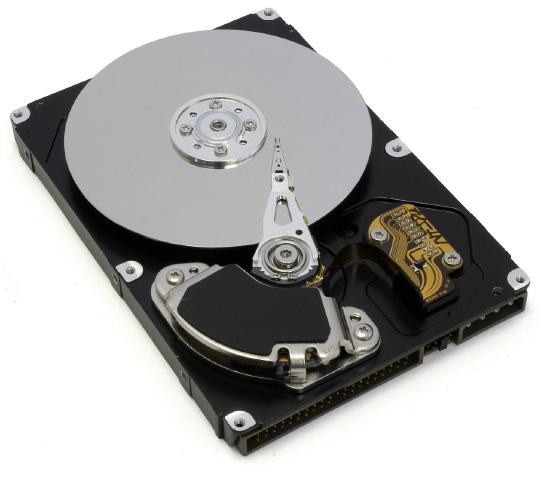2.3: Moore’s Law
- Page ID
- 22706
\( \newcommand{\vecs}[1]{\overset { \scriptstyle \rightharpoonup} {\mathbf{#1}} } \)
\( \newcommand{\vecd}[1]{\overset{-\!-\!\rightharpoonup}{\vphantom{a}\smash {#1}}} \)
\( \newcommand{\id}{\mathrm{id}}\) \( \newcommand{\Span}{\mathrm{span}}\)
( \newcommand{\kernel}{\mathrm{null}\,}\) \( \newcommand{\range}{\mathrm{range}\,}\)
\( \newcommand{\RealPart}{\mathrm{Re}}\) \( \newcommand{\ImaginaryPart}{\mathrm{Im}}\)
\( \newcommand{\Argument}{\mathrm{Arg}}\) \( \newcommand{\norm}[1]{\| #1 \|}\)
\( \newcommand{\inner}[2]{\langle #1, #2 \rangle}\)
\( \newcommand{\Span}{\mathrm{span}}\)
\( \newcommand{\id}{\mathrm{id}}\)
\( \newcommand{\Span}{\mathrm{span}}\)
\( \newcommand{\kernel}{\mathrm{null}\,}\)
\( \newcommand{\range}{\mathrm{range}\,}\)
\( \newcommand{\RealPart}{\mathrm{Re}}\)
\( \newcommand{\ImaginaryPart}{\mathrm{Im}}\)
\( \newcommand{\Argument}{\mathrm{Arg}}\)
\( \newcommand{\norm}[1]{\| #1 \|}\)
\( \newcommand{\inner}[2]{\langle #1, #2 \rangle}\)
\( \newcommand{\Span}{\mathrm{span}}\) \( \newcommand{\AA}{\unicode[.8,0]{x212B}}\)
\( \newcommand{\vectorA}[1]{\vec{#1}} % arrow\)
\( \newcommand{\vectorAt}[1]{\vec{\text{#1}}} % arrow\)
\( \newcommand{\vectorB}[1]{\overset { \scriptstyle \rightharpoonup} {\mathbf{#1}} } \)
\( \newcommand{\vectorC}[1]{\textbf{#1}} \)
\( \newcommand{\vectorD}[1]{\overrightarrow{#1}} \)
\( \newcommand{\vectorDt}[1]{\overrightarrow{\text{#1}}} \)
\( \newcommand{\vectE}[1]{\overset{-\!-\!\rightharpoonup}{\vphantom{a}\smash{\mathbf {#1}}}} \)
\( \newcommand{\vecs}[1]{\overset { \scriptstyle \rightharpoonup} {\mathbf{#1}} } \)
\( \newcommand{\vecd}[1]{\overset{-\!-\!\rightharpoonup}{\vphantom{a}\smash {#1}}} \)
\(\newcommand{\avec}{\mathbf a}\) \(\newcommand{\bvec}{\mathbf b}\) \(\newcommand{\cvec}{\mathbf c}\) \(\newcommand{\dvec}{\mathbf d}\) \(\newcommand{\dtil}{\widetilde{\mathbf d}}\) \(\newcommand{\evec}{\mathbf e}\) \(\newcommand{\fvec}{\mathbf f}\) \(\newcommand{\nvec}{\mathbf n}\) \(\newcommand{\pvec}{\mathbf p}\) \(\newcommand{\qvec}{\mathbf q}\) \(\newcommand{\svec}{\mathbf s}\) \(\newcommand{\tvec}{\mathbf t}\) \(\newcommand{\uvec}{\mathbf u}\) \(\newcommand{\vvec}{\mathbf v}\) \(\newcommand{\wvec}{\mathbf w}\) \(\newcommand{\xvec}{\mathbf x}\) \(\newcommand{\yvec}{\mathbf y}\) \(\newcommand{\zvec}{\mathbf z}\) \(\newcommand{\rvec}{\mathbf r}\) \(\newcommand{\mvec}{\mathbf m}\) \(\newcommand{\zerovec}{\mathbf 0}\) \(\newcommand{\onevec}{\mathbf 1}\) \(\newcommand{\real}{\mathbb R}\) \(\newcommand{\twovec}[2]{\left[\begin{array}{r}#1 \\ #2 \end{array}\right]}\) \(\newcommand{\ctwovec}[2]{\left[\begin{array}{c}#1 \\ #2 \end{array}\right]}\) \(\newcommand{\threevec}[3]{\left[\begin{array}{r}#1 \\ #2 \\ #3 \end{array}\right]}\) \(\newcommand{\cthreevec}[3]{\left[\begin{array}{c}#1 \\ #2 \\ #3 \end{array}\right]}\) \(\newcommand{\fourvec}[4]{\left[\begin{array}{r}#1 \\ #2 \\ #3 \\ #4 \end{array}\right]}\) \(\newcommand{\cfourvec}[4]{\left[\begin{array}{c}#1 \\ #2 \\ #3 \\ #4 \end{array}\right]}\) \(\newcommand{\fivevec}[5]{\left[\begin{array}{r}#1 \\ #2 \\ #3 \\ #4 \\ #5 \\ \end{array}\right]}\) \(\newcommand{\cfivevec}[5]{\left[\begin{array}{c}#1 \\ #2 \\ #3 \\ #4 \\ #5 \\ \end{array}\right]}\) \(\newcommand{\mattwo}[4]{\left[\begin{array}{rr}#1 \amp #2 \\ #3 \amp #4 \\ \end{array}\right]}\) \(\newcommand{\laspan}[1]{\text{Span}\{#1\}}\) \(\newcommand{\bcal}{\cal B}\) \(\newcommand{\ccal}{\cal C}\) \(\newcommand{\scal}{\cal S}\) \(\newcommand{\wcal}{\cal W}\) \(\newcommand{\ecal}{\cal E}\) \(\newcommand{\coords}[2]{\left\{#1\right\}_{#2}}\) \(\newcommand{\gray}[1]{\color{gray}{#1}}\) \(\newcommand{\lgray}[1]{\color{lightgray}{#1}}\) \(\newcommand{\rank}{\operatorname{rank}}\) \(\newcommand{\row}{\text{Row}}\) \(\newcommand{\col}{\text{Col}}\) \(\renewcommand{\row}{\text{Row}}\) \(\newcommand{\nul}{\text{Nul}}\) \(\newcommand{\var}{\text{Var}}\) \(\newcommand{\corr}{\text{corr}}\) \(\newcommand{\len}[1]{\left|#1\right|}\) \(\newcommand{\bbar}{\overline{\bvec}}\) \(\newcommand{\bhat}{\widehat{\bvec}}\) \(\newcommand{\bperp}{\bvec^\perp}\) \(\newcommand{\xhat}{\widehat{\xvec}}\) \(\newcommand{\vhat}{\widehat{\vvec}}\) \(\newcommand{\uhat}{\widehat{\uvec}}\) \(\newcommand{\what}{\widehat{\wvec}}\) \(\newcommand{\Sighat}{\widehat{\Sigma}}\) \(\newcommand{\lt}{<}\) \(\newcommand{\gt}{>}\) \(\newcommand{\amp}{&}\) \(\definecolor{fillinmathshade}{gray}{0.9}\)Technology is advancing, and computers are getting faster every year. Consumers often are unsure of buying today’s smartphone, tablet, or PC model because a more advanced model will be out shortly, leaving them with regret that it won’t be the most advanced anymore. Gordon Moore, the co-founder of Fairchild and one of Intel's founders, recognized this phenomenon in 1965, noting that microprocessor transistor counts had been doubling yearly. His insight eventually evolved into Moore’s Law, which states that the number of transistors on a chip will double every two years. (Moore, 1965). This has been generalized into the concept that computing power will double every two years for the same price point. Another way of looking at this is to think that the same computing power price will be cut in half every two years. Though many have predicted its demise, Moore’s Law has held for over fifty-five years. Technology is changing with innovation in design and Artificial Intelligence (AI) support. Experts now believe,
“The name of the game now is the technology may not be traditional silicon transistors; now it may be quantum computing, which is a different structure and nano-biotechnology, which consists of proteins and enzymes that are organic."
Therefore it is likely in the next few years, the emphasis of Moore’s Law will change. Experts believe that Moore’s law will not be able to go on indefinitely because of physical limits on continually shrinking the size of components on a chip. The billions of transistors on chips are not visible to the naked eye. It is thought that if Moore’s law were to continue through 2050, engineers would have to design transistors from components smaller than a single hydrogen atom.

Do you know we go from 1000 transistors in 1970, in an Intel 4004 chip, to 114 billion transistors in 2022 in an ARM-based dual die M1 Ultra system on a chip?
Figure \(\PageIndex{1}\) represents Moore’s law empirical relationship linked to transistors' number in a dense integrated circuit that doubles about every two years.
There will be a point, someday, where we hit the apex of processing technology as challenges occur to move forward to shrink circuits at the time of exponential growth will get more expensive. Moore’s Law will then be outdated due to technological innovation. Engineers will continue to strive for new ways to increase performance (Moore, 1965).
Motherboard
The motherboard is the main circuit board hub of the computer. The motherboard is the largest board inside a computer that allows communication between all the critical components that make the computer function. Some vital components attached directly to the motherboard include the central processing unit (CPU), graphics processing unit (GPU), main system memory (RAM), and expansion slots that provide connectivity and upgradeability. Also integrated onto modern motherboards are components like sound cards, network interfaces, USB ports, power regulators and controllers.
Motherboards come in different shapes and sizes; the prices of motherboards also vary depending on complexity. Complexity depends on how compact or expandable the computer is designed to be. Most modern motherboards have many integrated components, such as video and sound processing, requiring separate components.
The key role of the motherboard is to act as the central nervous system for the computer, passing power and data between components, and coordinating activities so that the system works in unison. It provides the critical links and communication that allows the other components such as processor, memory, storage, expansion cards, peripherals etc. to work together as an integrated system. It is a hub that holds and connects crucial computer components together through electronic circuitry etched onto it to coordinate data traffic.

Figure \(\PageIndex{1}\) shows an overall view of a motherboard, once the bottom cover is opened. Some of the motherboard, color blue, is visible while other portion is covered by two fans (right and left), or some black protective cover

Random-Access Memory
When a computer starts up, it begins to load information from the hard disk into its working or temporary memory. Your computer's short-term memory is called random-access memory (RAM), which transfers data much faster than the hard disk. Any program that you are running on the computer is loaded into RAM for processing. RAM is a high-speed component that stores all the information the computer needs for current and near-future use. Accessing RAM is much quicker than retrieving it from the hard drive. For a computer to work effectively, a minimal amount of RAM must be installed. In most cases, adding more RAM will allow the computer to run faster. Increasing the RAM size, the number of times this access operation is carried out is reduced, making the computer run faster. Another characteristic of RAM is that it is a volatile or temporary memory. This means that it can store data as long as it receives power; when the computer is turned off, any data stored in RAM is lost. This is why we need hard drives and SSDs that hold the information when we shut off the system.
RAM is generally installed in a personal computer by using a dual-inline memory module (DIMM). The type of DIMM accepted into a computer is dependent upon the motherboard. As described by Moore’s Law, the amount of memory and speeds of DIMMs have increased dramatically over the years.
A DIMM (Dual In-line Memory Module), commonly called a RAM stick, contains one or several random access memory (RAM) chips on a small circuit board with pins that connect it to the computer motherboard. DIMMs are typically used in desktop PCs, laptops, printers and other devices. They are the predominant method for adding memory into a computer system.



Figure \(\PageIndex{5}\): Left image is a 8GB SO-DIMM for a Dell 2021 Laptop. Right image is 16GB SO-DIMM for a Dell 2021 Laptop. Images by Ly-Huong Pham, is licensed CC BY-NC-SA
Hard Disk Drive (HDD)
While the RAM is used as working memory, the computer also needs a place to store data for the longer term. Most of today’s personal computers use a hard disk for long-term data storage. A hard disk is a magnetic material disk; a hard disk drive or HDD is the device for storing the data into a hard disk. The disk is where data is stored when the computer is turned off and retrieved from when the computer is turned on. The HDD provides lots of storage at an inexpensive cost compared to the SSD.

Solid-State Drive (SSD)
SSD is a new generation device replacing hard disks. They are much faster, and they utilize flash-based memory. Semiconductor chips are used to store data, not magnetic media. An embedded processor (or brain) reads and writes data. The brain, called a controller, is an important factor in determining the read and write speed. SSD’s are decreasing in price, but they are expensive. SSD’s have no moving parts, unlike the HDD, which deals with wear and tear of spinning and break down.


Comparison of SSD vs. HDD
The * represents the best selection in the category.
|
Attribute |
SSD (Solid State Drive) |
HDD (Hard Disk Drive) |
|---|---|---|
|
Power Draw / Battery Life |
* Less power draw, averages 2 – 3 watts, resulting in 30+ minute battery boost. |
More power draw-- averages 6 – 7 watts and therefore uses more battery. |
|
Cost |
Expensive, roughly $0.20 per gigabyte (based on buying a 1TB drive). |
* Only around $0.03 per gigabyte, very cheap (buying a 4TB model) |
|
Capacity |
Typically not larger than 1TB for notebook size drives; 4TB max for desktops. |
* Typically around 500GB and 2TB maximum for notebook size drives; 10TB max for desktops. |
|
Operating System Boot-Time |
* Around 10-13 seconds average bootup time. |
Around 30-40 seconds average bootup time. |
|
Noise |
* There are no moving parts and, as such, no sound. |
Audible clicks and spinning can be heard. |
|
Vibration |
* No vibration as there are no moving parts. |
The spinning of the platters can sometimes result in vibration. |
|
Heat Produced |
* Lower power draw and no moving parts, so little heat is produced. |
HDD doesn’t produce much heat, but it will have a measurable amount more heat than an SSD due to moving parts and higher power draw. |
|
Failure Rate |
* Mean time between failure rate of 2.0 million hours. |
Mean time between failure rate of 1.5 million hours. |
|
File Copy / Write Speed |
* Generally above 200 MB/s and up to 550 MB/s for cutting-edge drives. |
The range can be anywhere from 50 – 120 MB/s. |
|
Encryption |
Full Disk Encryption (FDE) Supported on some models. |
* Full Disk Encryption (FDE) Supported on some models. |
|
File Opening Speed |
* Up to 30% faster than HDD. |
Slower than SSD. |
|
Magnetism Affected? |
* An SSD is safe from any effects of magnetism. |
Magnets can erase data. |
Reference
Moore, Gordon E. (1965). "Cramming more components onto integrated circuits" (PDF). Electronics Magazine. p. 4. Retrieved 2012-10-18.


